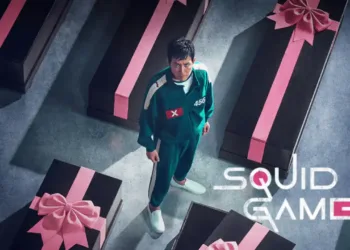Sara Jane Moore is a normal name for a person with a very interesting story. Her life was a tapestry of suburban normalcy, tumultuous relationships, and surprising radicalism because she was born in West Virginia in 1930. She had been through five marriages and a time as an FBI informant before she tried to kill President Gerald Ford on September 22, 1975.
On that terrible afternoon in San Francisco, Moore hid herself in a crowd with a. 38-caliber pistol because she thought her action would show how bad American democracy was. The shots she fired, which barely missed Ford, were a desperate cry for attention in a society that didn’t always listen to women.
This attempt, which happened just 17 days after Lynette “Squeaky” Fromme’s, made the nation confront a scary truth: disillusionment can lead to violence. Moore’s actions symbolized a generation’s anger, revealing the lengths one might go for a voice in a world that values silence over disagreement.
Moore’s Transformation: From Informant to Radical
Sara Jane Moore went from being a normal suburban mom to a political rebel. This change is both puzzling and deep. Moore was born in West Virginia in 1930, and her early life was marked by traditional ideals, such as going to school, getting married, and having children.
These things seemed to define her but also set the stage for her radicalization. Her struggle with societal norms and the tumult of her five marriages (each a chapter of discontent) laid the groundwork for her awakening. There was more to her than just watching. She was a woman struggling with the limits put on her in a country that was changing quickly.
In the early 1970s, the FBI hired her, which marked a turning point in history. Moore’s role as an informant was full of irony because he was supposed to join leftist groups. This woman, who was looking for an agency, was also giving information to a government she would later turn against. Being a part of radical groups and watching them from afar is a ridiculous double-edged sword that mirrors the contradictions in her life. She was supposed to report on the feelings that would soon make her feel even more unsatisfied with herself.
The fact that the Symbionese Liberation Army took Patty Hearst hostage sparked her radicalization. Aside from capturing the nation’s attention, this event also threw Moore into the whirlwind of political action. Her identity changed from informant to activist as she joined organizations fighting social justice.
The irony gets stronger here: the system trying to control her turned out to be the backdrop for her rebellion. The lines between informant and revolutionary blurred, revealing a deeper societal truth about how easy it is to get caught up in the tide of anger when confronted with systemic injustice.
The disillusionment of a generation is expressed in Moore’s transformation, which is a part of a larger cultural narrative. Her journey is a microcosm of the political upheaval of the 1970s, in which personal choices were intertwined with larger societal movements, which eventually led her to that tragic moment outside the St. Francis Hotel. Moore’s evolution reflects the chaotic struggle for agency in a system that is meant to suppress it in a world where the personal is political.
Documentary Structure and Style
The innovative documentary format of “Suburban Fury” is based on Sara Jane Moore’s sole first-person narrative, which is both compelling and controversial. Moore is the only person the filmmakers talk to for the interviews, which makes her life seem personal and dangerous.
Can we believe the recollections of a woman with a history of making up stories about herself? This choice begs the authenticity question. As viewers are forced into a narrative that is solely influenced by Moore’s personal experience, it is a risk that invites skepticism (and perhaps a good dose of irony). We are lost because no outside voices can put Moore’s story in context. Her errors become the very fabric of her story.
Moore’s life is presented in the film as a collection of broken-up snapshots rather than a linear biography, which further complicates the narrative. As we get closer to the most exciting part of her assassination attempt, the tension rises as each short story, marked by numbers, develops.
The tumult of the 1970s, a decade marked by political upheaval and social unrest, is mirrored in this non-linear method, which not only reflects Moore’s psyche’s chaotic nature. Incorporating archival video into these short stories improves the narrative and grounds Moore’s personal story in a bigger historical context. Her actions were intertwined in a larger societal fabric, as shown by clips from news programs, protests, and cultural landmarks used as both a backdrop and commentary.
The film looks great because it uses a cinematographic style that says a lot with its subtlety. A sense of nostalgia tinged with dread is evoked by long shots of Moore in familiar settings, such as the station wagon where she met her FBI handler.
The places Moore writes about feel almost like characters; they carry the weight of history and Moore’s inner turmoil. Each frame has a psychological depth that makes viewers confront the implications of her choices. In “Suburban Fury,” Moore’s story is turned into a powerful reflection on the intersection of personal and political identity through strong visual language.
The film forces us to wrestle with the complexities of truth and memory in this intricate dance between narrative structure and emotional impact, leaving us to wonder what historical storytelling is all about. It’s a movie exploration that affects Moore’s life and makes us think about how we make narratives in a world full of contradiction and chaos.
The Complexity of Moore’s Character
Sara Jane Moore’s character is a labyrinthine study of contradictions, a tapestry made of self-mythologizing and narrative errors. Her statements frequently contradict one another throughout “Suburban Fury,” revealing the intricate relationship between her view of herself and the public’s perception of her as a radical.
She goes back and forth between showing herself as a victim of her situation and a person who is actively working to make things better. She reflects on her actions with a sense of regret at one point, but at another, she insists that her attempt to assassinate the nation was a valid way to vent her anger. This duality brings up a very important question: who is Sara Jane Moore in real life?
Her self-perception and societal view are at odds with one another, and the tension is clear. Moore is a woman who used to be an FBI informant and now sees herself as a rebel who is taken advantage of. Her narrative is complicated by her unwillingness to fully confront her past, particularly her role in covering radical groups. It’s as if she’s making up a legend, but there are obvious holes in her story that make people wonder if her recollections are accurate. This self-creation, which I call “the myth of self-sabotage,” demonstrates how people change their narratives to deal with guilt and societal rejection.
The film suggests a tumultuous inner world shaped by psychological factors influencing her choices as it delves deeper into her mind. Her radicalization seems to be driven by a deep sense of personal betrayal, apathy toward the nation, and political unhappiness.
In a life marked by servitude and unhappiness, the assassination attempt can be seen as a desperate attempt to regain agency. Were her actions meant to get justice for other people, or were they just a dramatic way for her to assert her identity? The narrative is enhanced by the complexities of feminist rebellion in a patriarchal society, echoed by the ambiguity of her motivations.
Moore’s interactions with director Robinson Devor shed more light on his personality. The dynamic between them is tense when questioned about her past, revealing her defensiveness and evasiveness. She yells at Devor from time to time, and she dodges questions with a mix of nation and charm.
This back-and-forth reflects not only her struggle to keep control of her narrative but also the tension between the subject and filmmaker. As she struggles with the implications of her actions and the truths she might not fully understand, we see how fragile her constructed identity is in these times.
In the end, Moore is the contradictions of a woman whose choices and the time she lived in changed her. Her story is a microcosm of larger societal problems, showing how people deal with the gap between their history and how others see them and how the search for identity can lead people down dangerous paths. In “Suburban Fury,” Moore is more than just a historical person; she symbolizes the troubled times still happening today.
Conclusions and Reflections
Sara, a strong symbol of America’s larger social and political divisions in the 1970s, emerged in Jane Moore. Her attempt to assassinate President Ford is not just a footnote in history; it captures the frustrations of an age dealing with disillusionment and unrest.
The unhappiness over problems like government corruption, gender inequality, and the struggle for personal agency is reflected in Moore’s actions. In this sense, her story turns into a lens through which we can see how random choices and political forces can be. This is a standard example of the personal becoming political. Her radicalization is a reflection of a society that is about to change.
“Suburban Fury” helps us better understand these different people’s reasons by showing Moore as an outlier and a complicated person whose life has shaped her. The film challenges viewers to consider how societal forces shape and break down personal narratives.
Moore’s journey shows how anger, betrayal, and a desire for meaning can mix with other things to make people do crazy things. The film points out that people don’t always have clear reasons for their actions; instead, they are a tapestry of emotional and psychological threads sewn into their story’s fabric.
Moore’s story reminds us of the complex relationship between personal experience and the bigger historical narrative at a time when narratives are increasingly contested. It makes us think about how the choices we make as individuals can have long-lasting effects on society and our personal lives.
The Review
Suburban Fury
The gripping "Suburban Fury" explores Sara Jane Moore's complex character and role in a tumultuous time. The film explores the contradictions in her life through an original framework and a close, first-person narrative, which sheds light on larger societal tensions. It reflects the chaos of personal and political identities through arresting images and moving archive footage. The film offers a thought-provoking meditation on agency and historical effect, despite some narrative inconsistencies that call into question its authenticity.
PROS
- The exclusive first-person perspective offers deep insight into Moore's psyche.
- Effectively situates Moore's actions within broader societal tensions of the 1970s.
- Cinematography enhances emotional resonance and thematic depth.
- Integrates historical clips that enrich storytelling and provide context.
- Presents a nuanced portrayal of Moore, challenging simplistic narratives.
CONS
- Some contradictions in Moore's statements may undermine credibility.
- Focusing solely on Moore can narrow the film’s contextual scope.
- Some segments may feel disjointed or slow, affecting overall engagement.




















































